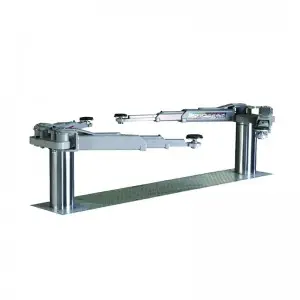
Decoding the Intricate Geometry of Cylinders: From Ancient Artifacts to Modern Applications
From the sun-drenched plains of ancient Mesopotamia to the sleek skyscrapers of modern metropolises, cylinders have played a significant role in human civilization. This deceptively simple three-dimensional shape, with its perfectly circular bases connecting parallel sides, has captivated mathematicians, engineers, and artists alike for centuries. Today, we delve into the intricate geometry of cylinders, unraveling their rich history and exploring their diverse applications in various fields.
Cylinders have been a part of human history for thousands of years. In ancient times, civilizations utilized cylindrical shapes in various forms. For instance, the Sumerians of Mesopotamia, regarded as the cradle of humanity’s first civilizations, created clay cylinders called “cylinder seals.” These small, intricately carved cylinders were used to create distinct impressions in clay tablets, signifying ownership or authenticity. These seals were instrumental in the administration of legal and commercial affairs during that era.
In addition to their cultural significance, cylinders have also become an essential geometrical shape in the realm of mathematics and engineering. Renowned ancient Greek mathematician, Archimedes, made significant contributions to the understanding of cylinders. He discovered that the volume of a cylinder is equal to the product of its base’s area and its height, with his famous “Archimedes’ principle.” This principle has since become a foundational concept in physics and engineering, proving vital in buoyancy calculations, fluid dynamics, and countless scientific applications.
The engineering applications of cylinders have flourished since Archimedes’ time. Modern engineering marvels, such as piston engines and hydraulic systems, rely heavily on cylinders to function efficiently. Cylinders enable linear motion by containing fluid or gas, converting pressure into mechanical force to power various machines. These applications find their way into everyday life, from car engines propelling vehicles forward to hydraulic cranes lifting heavy loads with ease.

Decoding the Intricate Geometry of Cylinders: From Ancient Artifacts to Modern Applications
Moreover, cylinders extend their influence into the architectural domain. The International Style of architecture, popularized in the early 20th century, embraced the cylinder as a fundamental element. Architects like Le Corbusier incorporated cylindrical forms into their designs, aiming to create buildings that embodied simplicity, efficiency, and harmony with nature. Today, we see these influences in iconic structures like the United Nations Headquarters in New York City, marked by cylindrical volumes rising towards the sky.

Decoding the Intricate Geometry of Cylinders: From Ancient Artifacts to Modern Applications
Art also embraces the timeless beauty of cylinders, employing them as both subjects and media. The celebrated Italian artist, Leonardo da Vinci, recognized the aesthetic appeal of cylinders, often incorporating them into his iconic paintings, epitomizing the Renaissance era. Artists continue to explore cylinders from different angles, capturing their elegance onto canvas or sculpting them into physical forms. Cylinders have become a symbol of artistic expression, offering a plethora of creative possibilities.
The versatility of the cylinder does not end with art and engineering. In contemporary society, cylindrical shapes have found their way into product designs, ranging from sleek furniture to revolutionary transport systems. The field of product design harnesses the cylinder’s inherent strength, stability, and efficiency to create visually pleasing and functional objects catering to modern sensibilities.
Cylinders continue to revolutionize industries with evolving technologies. From advanced manufacturing techniques to cutting-edge nanotechnology, cylinders play a vital role in a multitude of applications. As technology advances, researchers and inventors are exploring the potential of cylinders in fields such as renewable energy, robotics, and medical devices. Their unique geometry and structural integrity make them a versatile tool for shaping the future.
In conclusion, the humble cylinder encompasses a captivating legacy throughout human civilization. Its geometric perfection, mathematical significance, and practical applications have shaped the course of history, transcending boundaries of time and culture. Whether accentuating architectural designs, propelling engines forward, or igniting artistic expressions, cylinders continue to fascinate, inspire, and contribute to our ever-evolving world.k Lift Accessories
